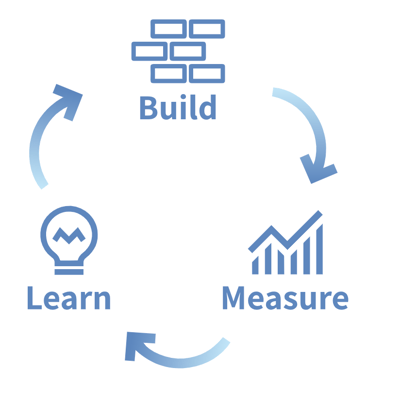4 min read
According to Gartner, 85% of future consumer interactions will be supported without human application by 2020. How can you make sure your chatbot thrives? Here's a deeper dive into Spixii's customer-centric approach from UX designer, Matteo Schgor.
How to apply agile frameworks and customer-centricity to your chatbot
Agile frameworks such as Scrum or Kanban, as well as Eric Ries' lean startup methodology, are designed to help you shorten product development cycles and develop around customer feedback. Yet, when you apply them to designing chatbot conversation, this combined approach will help you look at your digital customer journey from fresh eyes.
"Iterate, iterate, iterate. By iterating we validate
our ideas along the way because we're hearing
from the people we're actually designing for"
- Gary Brink, Founder of Tomorrow Partners
1. Understand the challenge
A common human tendency is to dive into building a solution before analysing the situation. Before you start considering solutions and technologies, analyse what problems your business is facing right now.
For instance, let's take the story of Minnie* (names changed).
When the Beast from the East hit the UK earlier this year, many insurance companies experienced a significant increase in claims: customers reporting damages to their roof and gutter from ice and snow, collapsed ceilings, burst water pipes and water damage.
Minnie returned from a 10-day holiday to find six inches of water in the house. She tried calling an emergency assistance number but could not get through for three and a half hours. The longer she waited, the more stressed she became and the more damage was caused to her home.
So, let's look at the problems.
Minnie was unable to reach customer service at her time of need and had to spend hours on hold, wasting her time and making the situation even more stressful. The company was unable to scale its call centres when facing a high number of calls, and the resulting poor customer service caused low customer loyalty and high customer acquisition costs.

What are the why's, how's and what's facing your company?
Your company and customers are unique. Investing time understanding them early on will help align your business strategy with the needs of your customers.
The resulting solution? Your technology will be more than just a nice-to-have or nod to digital transformation. It will be designed with a clear purpose. The moment you find this is when you find your power.
2. Formulate your hypotheses
We all bring ideas and doubts to the table when introducing something new.
Once you have defined the challenges, step back and gather a list of concrete hypotheses to test. A testable hypothesis must be as specific and detailed as possible. For instance, you could say that 'people aged between 24-35 living in London will need to use a chatbot because they have no time to wait on the switchboard'.

3. Understand your customers
Formulating hypotheses goes hand-in-hand with research.
- Who are you designing for?
- What are their needs?
- What value can you bring them?
You might discover that the customer you focused on is not your actual target audience, or that their problems are different to what you expected. Once you have a clear idea of who your customer is and what their problem is, you are ready to move into prototyping.
4. Validate your hypotheses
After building the first draft of your conversation, the next step is to test it using the build, measure and learn loop: the foundation of the lean startup methodology.

In small groups, invite people to test your conversation on multiple devices.
For instance, on a recent client project, we invited 20 people to try the conversation out in small groups of 3-4 people. After each testing session, gather the feedback and edit your conversation accordingly. This great guide explores this in-depth.
5. Continue iterating
The result? Once you have the first iteration of a conversation, you can follow this loop to continuously improve your digital experience. Once you have some data, this is where you can start applying machine learning and artificial intelligence to get behavioural customer insight.
Ultimately, it takes time to design great chatbot conversations. But more than technology or experience, the most important feature lies in a very human value: empathy.
Today, many insurers are struggling to emotionally connect with their customers. This approach to design may help you reach the next level of customer-centricity: bringing your business into a new era of personalisation.
